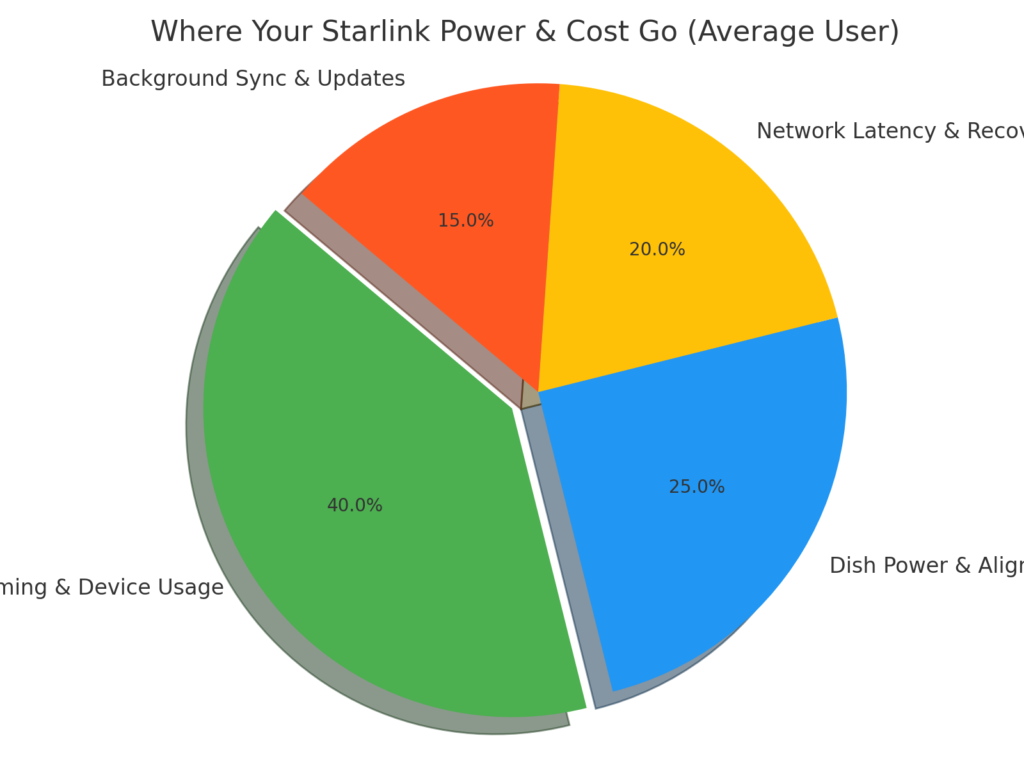Ever feel like your starlink satellite is draining your wallet instead of delivering great value?
You’re not alone.
As many people are shifting to starlink satellite internet especially in remote areas many quickly realize that while the speed is impressive, the monthly costs can pile up. And it’s not always obvious how to optimize the system without sacrificing performance.
Here’s the good news:
You don’t need to be an engineer or a space tech person to make the most out of your starlink setup. With a few smart, intermediate-level tweaks, you can reduce your expenses, improve speed, and maximize efficiency month after month.
Did you know Starlink has over 6,000 operational satellites in orbit as of 2025? Yet, most users only scratch the surface of what the system can really do.
Let’s dive into the most powerful starlink satellite tips to help you save money and boost performance all without expensive upgrades.
Why You Should Keep Reading This
You’re already using starlink satellite but wondering if it could be cheaper or faster
You’re tired of unexpected slowdowns or data usage spikes
You want easy, budget-friendly fixes that actually work
You don’t want to waste time trying trial-and-error YouTube tips
If that sounds like you you’re in the right place.
Starlink Satellite Power Tips to Save Money Every Month
Here are 8 tried-and-tested Starlink satellite tips to reduce costs and improve your internet experience.
1. Optimize Dish Placement (It’s More Crucial Than You Think)
Even a slight obstruction (like a tree or pole) can cause performance issues, forcing your system to work harder and that affects energy use and internet quality.
Tips:
- Use the Starlink App’s “Obstruction Finder” to test dish location
- Place the dish at least 10–15 feet above ground
- Avoid walls, fences, trees, or chimneys blocking the sky view
- South-facing locations work best in the Northern Hemisphere
According to starlink user reports on Reddit, optimal dish placement improves signal uptime by up to 27%, reducing auto-resets that waste power.
2. Power Cycle Your Router Weekly
Many users leave their Starlink routers running 24/7 for weeks.
Over time, this causes data lag, overheating, and higher electricity usage.
Just like your smartphone, your starlink satellite router needs a fresh start.
Do this:
- Unplug and restart your router once a week
- Set a weekly calendar reminder
- It clears cache and improves performance
A simple power cycle can reduce data throttling and lower your electricity bill.
3. Switch to Energy-Saving Mode
Starlink’s satellite newer routers now include energy-saving features that throttle power usage during idle times.
How to activate:
- Go to the Starlink App > Settings
- Look for Eco Mode / Sleep Mode / Idle Energy Management
- Activate it during non-peak hours (like 1 AM – 6 AM)
Reduce energy usage by 15–20% monthly, especially if you leave devices connected overnight.
4. Use an Uninterruptible Power Supply (UPS) Smartly
Many users overpay for electricity spikes caused by unstable connections. A smart UPS device not only protects your starlink system but also ensures smooth transitions during outages.
Pick a UPS with:
- Smart monitoring
- Voltage regulation
- Auto shutdown feature during inactive periods
It also prevents dish reboots, which can waste bandwidth and power.
5. Monitor and Limit Data-Hungry Devices
If you’re using starlink satellite residential, you get a limited monthly “Priority Data” plan. Exceeding that limit causes speed throttling, which ironically can increase power usage as devices struggle to load.
Audit your devices:
- Use the Starlink App or third-party tools like Fing
- Check which devices eat the most data
- Set timers or usage restrictions during work hours
Users who set usage caps on non-essential devices saved up to 12GB of priority data monthly, avoiding unnecessary overages.
6. Adjust Streaming Quality
It’s tempting to binge-watch Netflix in 4K, but high-resolution streaming eats your data faster than you think.
Do this instead:
- Set streaming to 1080p or 720p
- Turn off auto-play previews on Netflix, YouTube
- Download content instead of streaming it live
Lower-quality streaming reduces your router’s load, indirectly saving power.
7. Automate Dish Stow Mode During Storms or High Winds
Your starlink dish uses power to constantly align with satellites. During storms or strong winds, it struggles even more.
Solution:
- Use the Starlink app to manually stow the dish
- Or connect it to a smart home device that automates dish stow when wind speeds rise
This helps reduce wear and tear and cuts energy usage when internet is unstable anyway.
8. Keep Firmware & App Updated
You’d be surprised how many people run old firmware. Each update brings security patches, performance improvements, and power-saving tweaks.
Quick Fix:
- Go to the Starlink app > System > Firmware
- Turn on auto-updates or check weekly for changes
Stat: According to user forums, updated firmware leads to 9–12% better performance on average.
Also Read Here: Top 10 Hidden Gem PlayStation Games [Gamers, 2025]
Understanding where your power and data go is the first step to cutting costs smartly.

Especially for users in remote areas, using solar panels or battery backups during the day can cut energy bills drastically.
Devices like EcoFlow or Bluetti are great for this.
They store solar energy and keep your router running without grid power.
Conclusion:
Let’s recap what you’ve learned:
- Starlink satellite are powerful, but not always power-efficient
- You don’t need high-end gear just smart, intermediate tips
- Optimizing dish placement, managing devices, enabling power-saving modes, and keeping firmware updated can reduce monthly costs significantly
- Better performance. More savings. Less stress. And no more surprise bills.
Q1. Can I reduce my Starlink power usage without affecting performance?
A: Yes, you can. Placing your dish in a clear, obstruction-free view of the sky ensures optimal connectivity and reduces the need for power-hungry recalibrations.
Q2. Does Starlink consume a lot of power compared to regular Wi-Fi routers?
A: Yes. Starlink dishes typically consume 50–100W, significantly more than traditional routers.
Q3. Are there ways to reduce power when starlink is not in use?
A: Absolutely. You can use smart plugs or timers to automatically shut down the dish and router during sleep hours.
Q4. Does the Starlink router have a built-in sleep mode or eco-mode?
A: As of now, Starlink routers do not have a dedicated sleep or eco mode. You’ll need third-party smart devices or manual scheduling to manage power.







